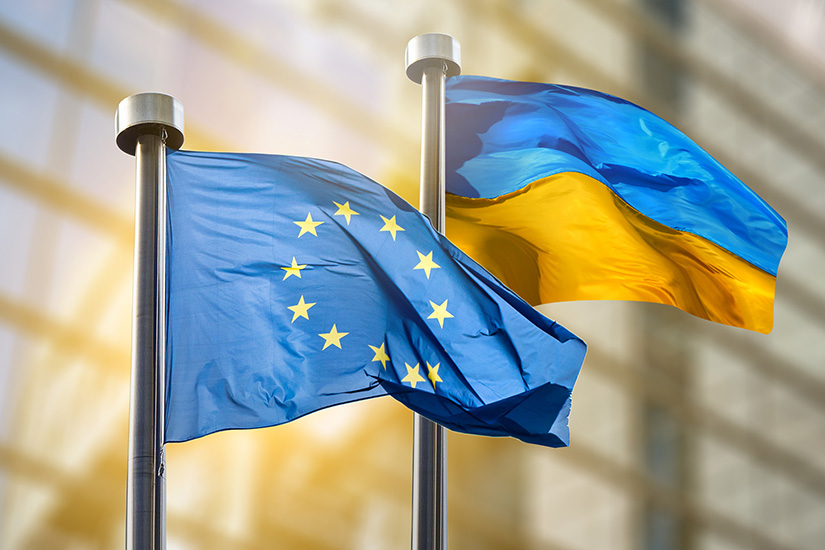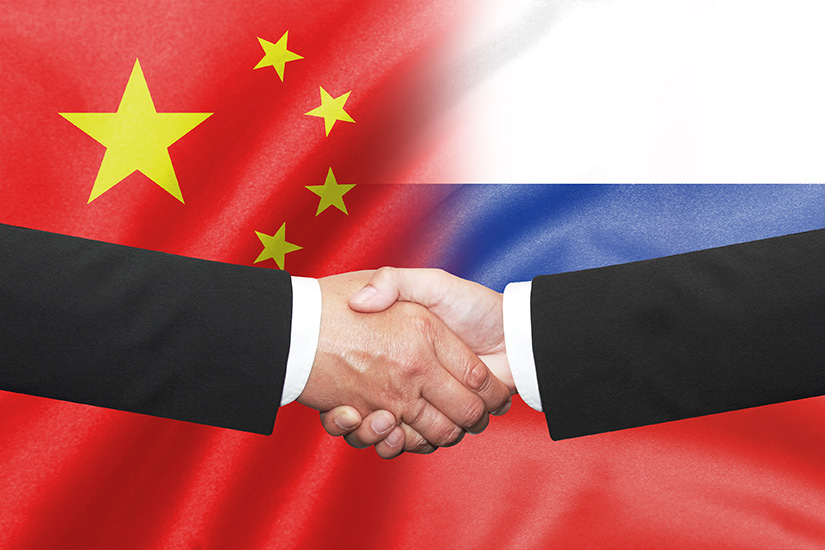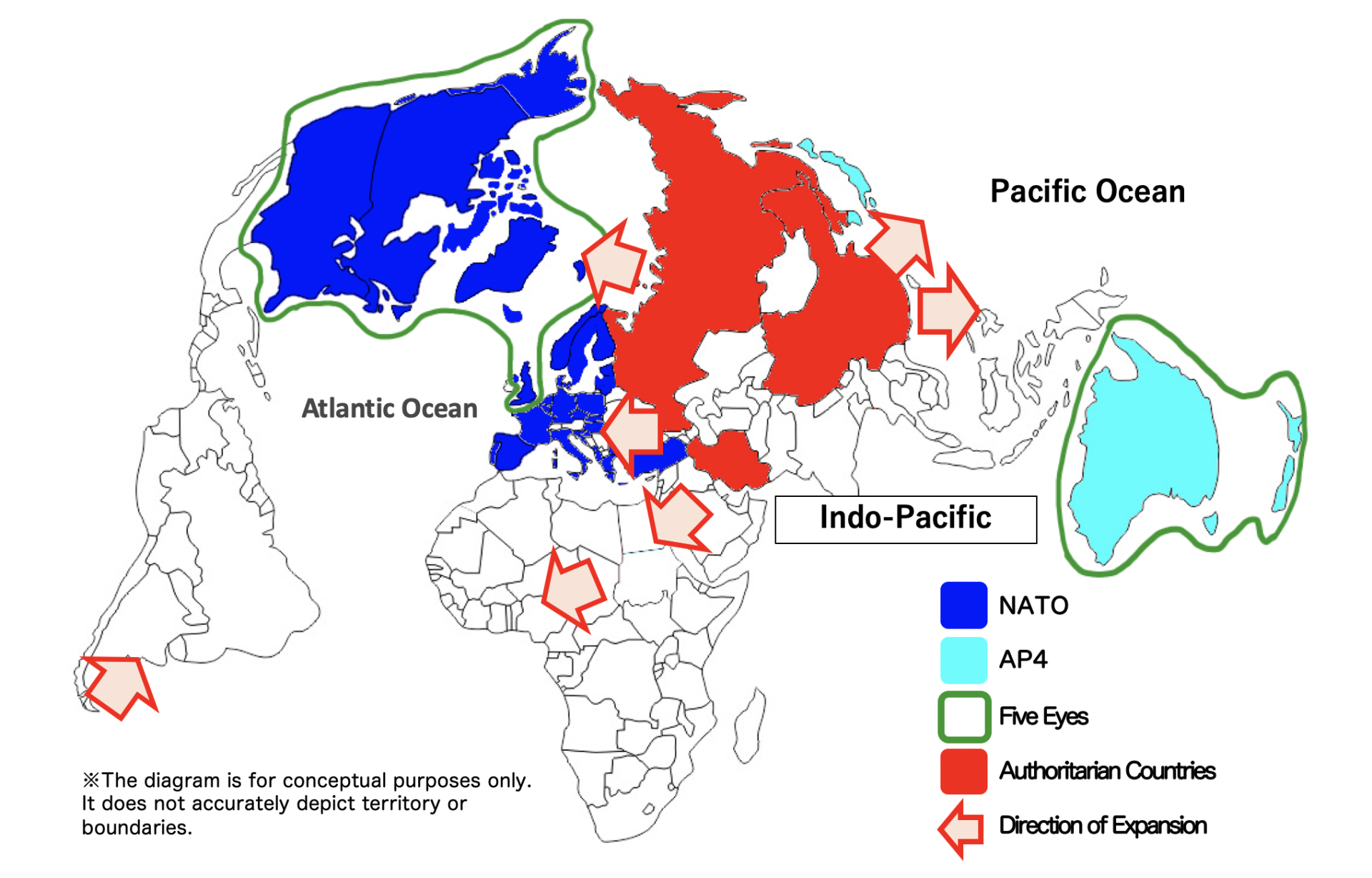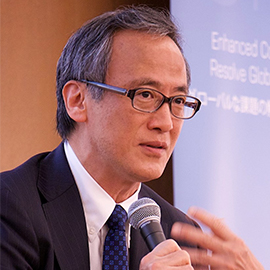NATO is a political and military alliance that ensures the freedom and security of its member countries[1], and the preamble to the North Atlantic Treaty reads that it is also a community based on the common values of individual freedom, democracy, human rights, and the rule of law[2]. To date, in order to ensure its effectiveness as a collective defense organization, NATO has continued to use the opportunities presented by summits and strategic concept development to address change through new plans, strategies, and challenges.
The summit held in Washington from July 9, 2024, was also positioned as an important opportunity to demonstrate to both internal and external audiences NATO’s significance and direction through consensus-based discussion and coordination at the North Atlantic Council (NAC) at the level of ambassadors of national delegations, and foreign and defense ministers.
The three main themes of this summit meeting were (1) increasing long-term support for Ukraine, (2) strengthening deterrence and defense capabilities as the foundation of the alliance, and (3) evolving global partnerships, including in the Indo-Pacific. In relation to the last of these, Japanese Prime Minister Fumio Kishida participated in the Asia-Pacific Partners (AP4) Summit for the third time.
This article will summarize the outcomes of the NATO summit from political, military, and value alliance perspectives, with reference to the strengthening of relations with the Five Eyes intelligence alliance in security cooperation between the Indo-Pacific, including Japan, and Europe.
Support for Ukraine
The most significant political outcome was the agreement on a commitment to long-term NATO support in providing military equipment, support, and training to Ukraine to lay the groundwork for Ukraine's victory over Russia[3]. This was likely due to concerns about continued support to Russia from third countries that would neutralize international sanctions and restrictions, delays or stagnation in military transfers to Ukraine promised by the West, and a decline in member states' ability to continue warfare due to the large amount of equipment and ammunition provided. It is also likely that member countries have had to continue to accept the risks and costs that a sufficient environment to stop Russia-Ukraine war has not been created[4].
On the other hand, just before the summit, Hungary objected to the proposed support for Ukraine, expressing disagreement with the coordination framework, including training support, and long-term financial pledges, casting a pall over the summit[5].
Insisting that support for Ukraine "is not charity, but is in our own security interest," Secretary General Jens Stoltenberg successfully steered the Alliance toward consensus by forcing Hungary to accept a political compromise in which NATO respects Hungary's position but Hungary does not interfere with NATO's decision-making[6]. The 32-nation political alliance is destined to continue to face these political difficulties in the future.

360-degree Deterrence and Defense
Since 2022, NATO has been committed to a 360-degree all-round approach to deterrence and defense posture, and it has begun preparing not only for Russian threats from the “East”, but also from the “North”, including the Arctic Ocean and the Baltic Sea, and from the increasingly volatile “South”. Especially in the South, Russia and China are increasing their authoritarian influence in different ways, taking advantage of anti-Western sentiment spread by disinformation and other means[7]. As a result, an action plan to strengthen NATO's involvement in the South has now been agreed upon, and a new representative for the Southern Neighborhood will be appointed for this purpose[8].
In addition to the traditionally noted proliferation of ballistic missiles and other weapons of mass destruction by North Korea, cyber-attacks believed to be conducted by China and Russia, illegal activities in outer space, and attacks on the cognitive domain[9] through disinformation, support for Russia from countries outside the region, made clear through the war in Ukraine, means there is also a growing interest in deterrence and defense of the "West" from the perspective of U.S. which occupies the western flank of NATO.
This is focused specifically on China, which supports Russia's war economy through dual-use technologies such as semiconductors and related equipment[10], and North Korea and Iran, which provide large quantities of ammunition and drones to the Russian military in exchange for technology to develop missiles and nuclear weapons[11].
In particular, China, which calls NATO a "product of the Cold War,"[12] is increasingly recognized as an existential threat[13] to Europe on the military front, having conducted its first joint naval exercises with Russia in the Mediterranean Sea in 2015[14] and military exercises with Belarus at the same time as the Washington summit[15].

Strengthening Global Partnerships as a Value Alliance
Global partnership is a major pillar of cooperative security, a core mission of the alliance, and has become even more important in recent years in upholding NATO's basic principles as a community of values. This is evident in the strong sense of urgency that NATO, as a value alliance, is feeling in the wake of the war in Ukraine, as authoritarian states increasingly reject Western values and urge changes in the existing international order of individual freedom, human rights, democracy, and the rule of law.
Furthermore, NATO has no choice but to be even more vigilant as hostile collaboration among authoritarian powers could rapidly evolve in the future[16], as China, Russia, and North Korea synergize their cooperation, including in the military field, based on their comprehensive strategic partnerships with each other[17].
In the future, as international values become more diverse, in part because of the rise of the Global South, it will be a major challenge for NATO as a value alliance to further strengthen its democratic resilience as stipulated in Article 3 of the North Atlantic Treaty, taking into account the growing influence of authoritarian states[18].
At the same time, the move is linked to an accelerated approach to Indo-Pacific countries that may share values, and is likely to lead to significant changes in NATO-Japan cooperation in the future.
Five Eyes and Japan’s Global Approach
In April 2024, the leaders of the United States and Japan affirmed that the two countries, as global partners based on common values, will together maintain and strengthen a free and open international order based on the rule of law[19].
They also made clear that the U.S.-Japan alliance would be used as a base to strengthen security networks with like-minded countries, such as the so-called AP4 countries that share values, Australia, New Zealand, South Korea and Southeast Asian countries, as well as NATO[20].
Authoritarianism's Expansion under Globalism (conceptual graphic)

The strengthening of a global network based on such common values would ensure lasting regional peace and stability, contribute to the future development and prosperity of both the U.S. and Japan, and strengthen security ties with Europe and the Atlantic region.
As the development of the security posture between Japan, the U.S., and Europe (NATO) accelerates, what will form the basis for maintaining stable relationships in the future? I think that the foundation for maintaining stable relations is information-sharing and technological cooperation that contributes to mutual understanding and concerted action based on shared values to enhance the resilience of Western societies against external authoritarian expansion.
Ultimately, as the target domain of security activities expands beyond traditional real space to include cyberspace and the cognitive domain, countries are expected to establish a strategic advantage over diversifying and evolving threats by acquiring superiority in intelligence and technology.
In recent years, the targets of security intelligence collection, analysis, and sharing have become more multilateral, multidisciplinary, organic, and comprehensive in nature. As a result, the globalization of threats and the speed at which they occur are placing even greater demands on the accuracy and precision of intelligence, and are increasing the need to accelerate the intelligence cycle - that is, to process the collection, analysis, distribution, and use of information in a shorter amount of time.
In the changing environment surrounding information, it is essential to proactively incorporate emerging and disruptive technologies (EDTs) such as artificial intelligence (AI) and quantum mechanics into intelligence systems and assets as solutions[21]. The implementation of the EDTs must also be accelerated by developing a framework for external technological cooperation.
Based on this recognition of the current situation, Japan needs to strengthen its relationship with the Five Eyes intelligence alliance, focusing on the intelligence and technology aspects, to enhance its global approach. Five Eyes is a framework for the multilateral sharing of intelligence, especially the results of surveillance of electronic communications, based on mutual trust that there will be no mutual surveillance among the constituent nations, which are the U.S., the U.K, Canada, Australia, and New Zealand[22].
Five Eyes is currently attempting to flexibly respond and adapt to these technological changes, including through cooperation with the private sector, to ensure its raison d'etre and functional effectiveness amid the rapid changes in the international environment in the 21st century and the rapid evolution of information and communications technologies (ICT), including the internet[23].
Japan should look to strengthen broad intelligence and technology cooperation in the Indo-Pacific region with Five Eyes on the basis of the U.S.-Japan alliance and to evolve trilateral intelligence and technology cooperation with NATO.
NATO has also already begun to move to secure its technological advantage by launching ambitious initiatives aimed at integrating EDTs into its strategic structure, such as the Defense Innovation Accelerator for the North Atlantic (DIANA) and the NATO Innovation Fund (NIF) [24].
Ultimately, Japan will consider establishing a new technology co-creation center in the Indo-Pacific to strengthen EDTs-based intelligence cooperation with like-minded countries, and will hasten the establishment of a NATO liaison office in Japan as a coordination hub for such cooperation.
(2024/09/03)
Notes
- 1 NATO,” WHAT IS NATO?,” March 9, 2023.
- 2 NATO, “The North Atlantic Treaty Washington D.C. - 4 April 1949,” October 19, 2023.
- 3 NATO, “Statement of the NATO-Ukraine Council,” July 15, 2024.
- 4 Ana Swanson, “Why Sanctions Haven’t Hobbled Russia,” The New York Times, February 16, 2024.
- 5 NATO,“NATO Secretary General meets Hungarian Prime Minister in Budapest,” June 12,2024.
- 6 NATO, “Joint press conference with NATO Secretary General Jens Stoltenberg and US Secretary of State, Antony Blinken,” June 18, 2024:NATO, “Pre-summit press conference by Secretary General Jens Stoltenberg ahead of the NATO Summit in Washington,” July 5, 2024.
- 7 NATO, “Address by NATO Secretary General Stoltenberg at the NATO Parliamentary Assembly (NPA) in Sofia, Bulgaria,” May 27, 2024.
- 8 NATO, “NATO Secretary General announces the appointment of new Special Representative for the Southern Neighborhood, ” July 23, 2024.
- 9 NATO has also had a difficult time dealing with hostile actions from the new domain, suggesting that it might invoke its right to collective self-defense (Article 5). NATO, “News: NATO will defend itself Article by NATO Secretary General Jens Stoltenberg published in Prospect’s new cyber resilience supplement,” August 29, 2019.
- 10 Simon Lewis, “In Beijing, Blinken confronts China over 'powering' Russia's war,” Reuters, April 26, 2024.
- 11 Olivia Yanchik, “Arsenal of Autocracy: North Korea and Iran are arming Russia in Ukraine,” Atlantic Council, January 11, 2024.
- 12 Rita Cheng, “China steps up anti-NATO rhetoric ahead of Madrid summit, citing 'Cold War' ethos,” Radio Free Asia, June 24, 2022.
- 13 This refers to "the existence of a danger to the very credibility of the alliance's existence."
- 14 “China, Russia to hold first joint Mediterranean naval drills in May,” Reuters, April 30, 2015.
- 15 Isaac Yee, Ivana Kottasová and Simone McCarthy, “China and Belarus conduct joint military exercises right next to NATO and EU’s border,” July 9, 2024.
- 16 NATO, “NATO2022 STRATEGIC CONCEPT,” June 29, 2022.
- 17 This refers to the Joint Statement on Deepening the China-Russia Comprehensive Strategic Partnership of Coordination for the New Era, released after the May 16 summit meeting, and the Comprehensive Strategic Partnership Treaty signed by Russia and North Korea at their June 19 summit meeting.
- 18 Michael Turner, Gerald E. Connolly, “NATO in the democratic arena,” NATO Review, 26 June, 2024.
- 19 MOFA, “Japan-U.S. Joint Leaders’ Statement: Global Partners for the Future,” April 10, 2024.
- 20 U.S. Department of Defense,” Joint Statement of the Security Consultative Committee ("2+2"),” July 28, 2024.
- 21 Sydney J. Freedberg Jr., “AI For Five Eyes? New bill pushes AI collaboration with UK, Australia, Canada, New Zealand,” Breaking Defense, November 22, 2023.
- 22 Margaret Warner, “An exclusive club: The 5 countries that don’t spy on each other,” PBS News Hour, October 25, 2013.
- 23 Since June 2020, Five Eyes has been strengthening its presence in the diplomatic and economic spheres, as evidenced by the release of a summary of a meeting of defense ministers who say they have confirmed the strengthening of common security policies and relations with partner countries. Australian Government Defence, “Joint Statement - Five Eyes defence Ministers' meeting,” June 23, 2020.In addition, in October 2023, Five Eyes held its first " Emerging Technology and Securing Innovation Security Summit " in Silicon Valley, the global IT center, to publicly embark on technology cooperation and collaboration with the private sector. FBI National Press Office, “FBI Hosts Five Eyes Summit to Launch Drive to Secure Innovation in Response to Intelligence Threats,” October 16, 2023.
- 24 NATO, “Emerging and disruptive technologies,” May 30,2024.

